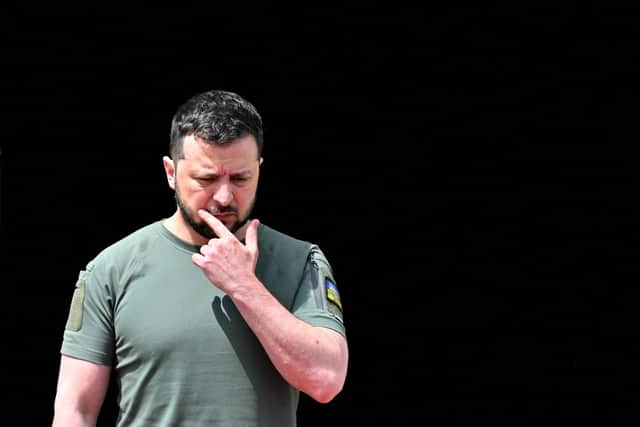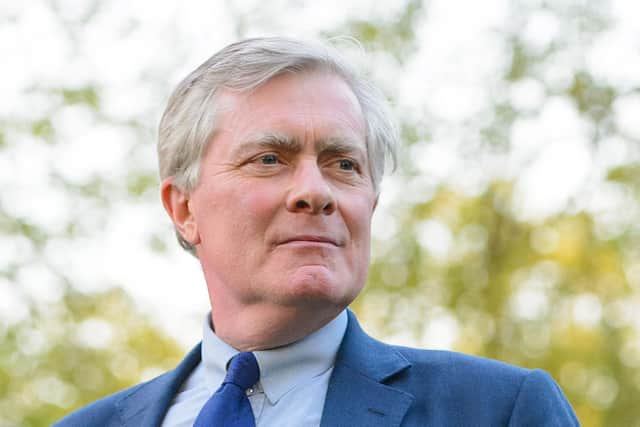Ukraine's President Zelensky puts NATO's Jens Stoltenberg in impossible position but next days will be decisive - Patrick Mercer
There’s no doubt that parts of these documents have been doctored, but there’s a broad consensus that they are genuine and very damaging to the US and NATO’s support for Ukraine because - unlike most of the stuff that is being pumped out by the majority of the Western media - they suggest that Kiev is in a very difficult position.
Most disturbing are the suggestions that Western arms, ammunition and vehicles have reached the front too little and too late. More precisely, the documents underline the grievous damage that has been done to Ukrainian air defence radars and missiles which will probably allow Russia’s attack aircraft and helicopters much freer reign. So far Moscow has not been able to dominate the skies, but the leaks outline that from about mid May there simply won’t be enough missiles to prevent Russian pilots roaming almost unopposed.
Advertisement
Hide AdAdvertisement
Hide AdHand-in-hand with this the leaks portray only a partially re-equipped and re-manned force which may be strong enough for one more offensive in the spring, but no more than that. If this assault achieves its expected goals of driving a wedge into the corridor between the Donbas and Crimea, Russia will be forced to negotiate. But, if the operation fails, there’s very little else in terms of trained men or materiel to sustain further fighting: the last shot in the locker will have been fired.


Yet suddenly the armchair generals and jingoistic journalists have changed their tune: it’s no longer about the complete ejection of Russian forces, it’s about helping Ukraine to hold the line against President Putin’s masses until further help can be levered from the West. This, of course, has left the gallant President Zelensky with a dilemma.
Quite rightly, none of us knows the inner pressures which play upon Kiev’s future decision making: I reckon, though, that these are the key points. First, negotiations with Russia would have started twelve months ago had the West not promised overwhelming aid and urged Ukraine to fight on. Since then Kiev’s enjoyed several successes, but the flower of Ukraine’s youth has been snuffed out whilst Russia plods on unimpressively but inexorably. In tandem, as the leaks reveal, Kiev’s blood and gold are running short and the West’s dollars and tanks are not enough to turn back the tide.
So, President Zelensky has got to be realistic and plan for every eventuality from success to his spring offensive’s defeat. If that happens his choices are stark: negotiation from a position of weakness or refusing to act any longer as the West’s proxy warrior against Russia and seeking something much greater from NATO.
Advertisement
Hide AdAdvertisement
Hide AdHere is what he said at a press conference with Jens Stoltenberg - NATO’s Secretary General - a few days ago: “We need something more than the kind of relationship we are having now (with NATO)… we believe in a guarantee of Ukraine’s security and a concrete guarantee…But while we await membership…, we want to have very specific guarantees of security…”


President Zelensky’s wholly understandable frustration puts Mr Stoltenberg in an impossible position. The ‘very specific guarantees’ that Mr Zelensky demands translate as surety of direct NATO protection should Russia prevail - brigades and divisions of Americans, Brits, Poles and all the others - putting their boots on the ground. And that, of course, means all-out war, something which the Secretary General wants to avoid at all costs. How to resolve things? There’s already been a partial dress rehearsal for something like this last October during the G7 meeting when all the principal decision makers of NATO and others were together. During this a Russian missile aimed at Ukraine fell on Polish (ie NATO) soil killing innocent farmers, causing an immediate outcry from Kiev: this was a clear act of war which must cause other NATO members to retaliate against Moscow to protect Poland. For a few hours it looked as though war between the West and Russia was inevitable - although it wasn’t that simple as the errant missile soon proved to be Ukrainian, not Russian - a tragic mistake. But how the NATO big wigs reacted was much more disconcerting: they did nothing but talk.
Good job, war was averted, I hear you say: but what a message of vacillating weakness that sent to President Putin. Yet, it’s upon this same organisation which President Zelensky must now depend. Shortly he must decide where and when to gamble his slender forces and all the time he must be wondering whether those nations who have been so keen to see his troops attack will stand by him should things go wrong. The next few days and weeks will be decisive.